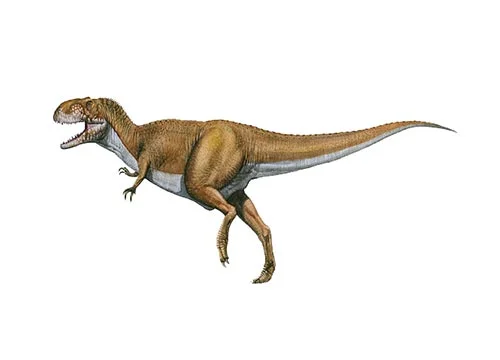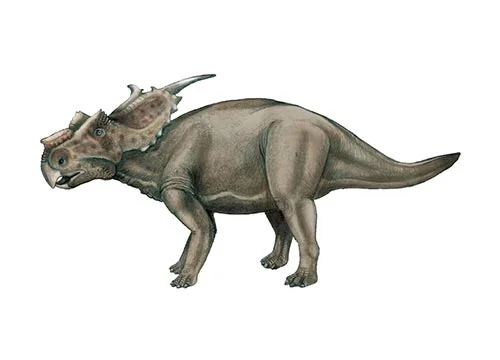Pachyrhinosaurus (Thick nosed lizard)

Pack-ee-rye-no-sore-us
Charles Mortram Sternberg - 1950
Herbivore
Estimated 8 meters long
Ceratopsian
P. canadensis (type), P. lakustai, P. perotorum
Canada, Alberta - Bearpaw Formation, Horseshoe Canyon Formation. USA, Alaska - Prince Creek Formation
Late Cretaceous, 70-69 million years ago
Pachyrhinosaurus Facts
Pachyrhinosaurus is a genus of large, herbivorous ceratopsian dinosaur that lived in North America during the Late Cretaceous period, about 70-69 million years ago. The name Pachyrhinosaurus means “thick-nosed lizard” in Greek, referring to the unique shape of its skull.
Pachyrhinosaurus had a distinctive skull with a thick bony frill and a large, flattened horn on its nose. Its frill lacked the sharp spikes seen in other ceratopsians, such as Triceratops. Instead, it had a relatively smooth surface with only small bumps and ridges. It is believed that Pachyrhinosaurus used its frill and nose horn in social and reproductive displays, and also for defense against predators.
Pachyrhinosaurus was a large animal, with some individuals reaching lengths of up to 8 meters (26 feet) and weighing up to 4,500 kilograms (9,900 pounds). Despite its size, Pachyrhinosaurus was a relatively fast and agile animal. It had strong legs and could run at speeds of up to 40 km/h (25 mph).
Pachyrhinosaurus lived in large herds, consisting of individuals of different ages and both sexes. It is thought that these herds may have migrated seasonally in search of food and water. Pachyrhinosaurus was an herbivore, feeding on a variety of plants, such as cycads, ferns, and conifers.
The first fossils of Pachyrhinosaurus were discovered in Alberta, Canada in the 1940s. Since then, many more fossils have been found in Canada and the United States, including juvenile specimens that have provided valuable information about the growth and development of these animals.
In conclusion, Pachyrhinosaurus was a large, herbivorous dinosaur that lived in North America during the Late Cretaceous period. Its distinctive skull with a large, flattened horn on its nose and a thick frill without spikes helped Pachyrhinosaurus in social, reproductive displays and defense against predators. Pachyrhinosaurus lived in large herds, consisting of individuals of different ages and both sexes, and was an herbivore that fed on a variety of plants. The discovery of Pachyrhinosaurus fossils has provided valuable information about the biology and behavior of this unique dinosaur.



